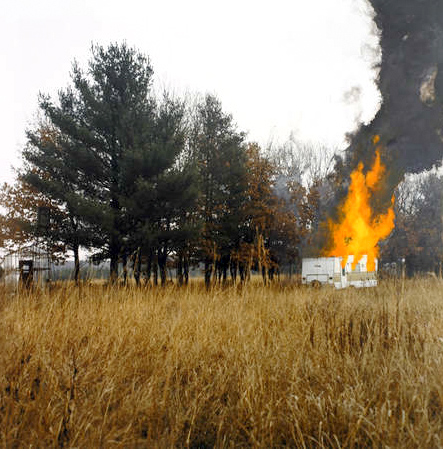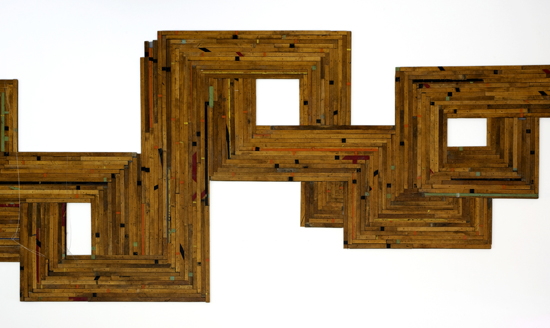
Juxtaposed against the cacophony of Los Angeles traffic, contemporary sculptor Rob Fischer brings a simultaneous sense of calm and question to the Hammer Museum.
Beginning Nov. 27, Fischer takes over the museum’s lobby wall as the latest artist to participate in the ongoing Hammer Projects series.
Running through April 1, the exhibit features a 3-D mural constructed from a blend of floorboard work, previously shown in a variety of different museum exhibitions, screen-printed signs, panes of glass and other found materials fused together for the first time in an original configuration.
Growing increasingly well-known in the art community, the Hammer Projects series’ popularity is in part because of its lobby wall exhibitions.
“We like that when people walk into the museum, they see art. They don’t see a cafe. We’re not trying to sell them anything,” said Anne Ellegood, Hammer Museum senior curator.
“And this is a very substantial artwork. Every time we do a project here, the artist is intimately involved. It’s a commission, really ““ a site-specific project designed for the space.”
Working primarily with cast-aside furniture, windows, mirrors, books, car parts, flooring and other forgotten materials as his sculptural mediums, Fischer makes recycling an artistic avenue.
Wistfully echoing their former functions, these sculptural elements are cohesive in their shared renewal.
Boldly adorning the stark white museum lobby, Fischer’s assemblages intertwine history and modernity.
On a winding surface of weathered gymnasium floorboards, still bearing the scuffed varnish and colored flecks of their past stripes, are scarred relics of character.
With a lifetime of road trips as his muse and inspiration, Fischer’s visual maze bridges the walls of the Hammer to present the existential question of identity.
“These pathways were intended to have this sense that you get when you’re driving on these roads, which, to me, was playing up sort of metaphorically to the way a person’s life goes,” Fischer said.
“You try to control it, but you don’t really. How your life turns out, a lot of it is really random. You end up somewhere and you get here, and somehow you find yourself. Unexpectedly, you figure out who you are,” he added.
Though born out of the Midwestern landscapes of Fischer’s Minnesota home, there is a transcendental theme to his work.
“He references the Minnesota landscape, this rural drive … (but) it can apply to any place,” said Joan Rothfuss, Minneapolis Walker Art Center curator.
“It’s the American urge to move.”
Fischer himself works out of Brooklyn.
He graduated from the Minneapolis College of Art and Design in 1993, and his work has been featured in museums worldwide.
Even amidst the honks and brake lights of Wilshire Boulevard, Fischer’s sculpture exudes these American ideals of freedom, while contrasting with the congestion of Los Angeles.
“You have the meandering craziness of the streets here, yet there’s this quiet feeling about the work,” Ellegood said.
“The installation itself is meant to elicit a kind of sense of being on a road trip, … almost like a map. It’s more abstracted, yet physical at the same time.”
It is through this visual highway that Fischer constructs original narrative from those of the past.
“When you’re not looking, you realize that this weird history you’ve got is what created who you are,” Fischer said.
“There’s this strange beauty that’s overlaid in this mysterious existential question of who you are.”
